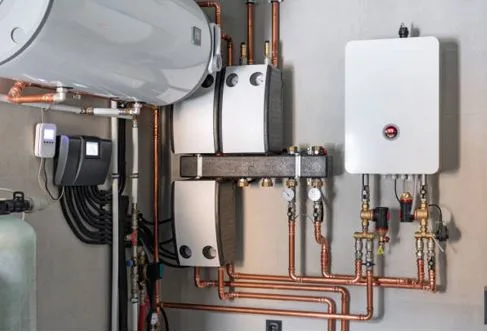How Homeowners Are Redefining Comfort and Efficiency
Have you ever walked into your home and wished it felt just a little more comfortable or energy-efficient? Many homeowners across the country are starting to ask that question. They’re looking for ways to improve their spaces without relying on outdated methods. With new technology and changing priorities, comfort and efficiency don’t have to be expensive or complicated anymore. From smarter systems to better planning, today’s homes are becoming more enjoyable places to live in while saving money on energy bills.
In this blog, we will share how homeowners are making practical and meaningful changes to redefine comfort and efficiency in their homes.
Smart Thermostats for Personalized Temperature Control
Smart thermostats have become one of the first upgrades for homeowners trying to create a more efficient space. These devices let people control the temperature of their homes even when they aren’t there. They can adjust automatically based on your routine or preferences. If you leave the house at 8 a.m., the thermostat will lower the heating or cooling to save energy, then get your home back to a comfortable level before you return.
Another benefit is the ability to track energy use. Homeowners can look at reports from the thermostat app to see when they use the most energy and why. This helps them make smarter choices. Smart thermostats also work with other home systems like voice assistants. You can just say, “Make it cooler,” and the temperature changes. This combination of ease and savings is a big reason why more people are installing them in their homes.
Energy-Efficient Heating and Cooling Options
Modern homes no longer rely only on traditional furnaces or central AC systems. Homeowners now explore better options that offer comfort while cutting down energy use. One popular solution includes mini-split heating & cooling systems. These systems allow homeowners to control temperatures in specific areas of the house, so energy isn’t wasted heating or cooling empty rooms. They also work without ductwork, which makes them great for older homes or additions.
Another plus is how quiet and small mini-split systems are. They don’t take up much space and don’t make the loud noises many traditional systems do. This change helps homeowners feel more in control of their comfort. When a system is more efficient and easy to use, it saves money and adds to the overall quality of life. More families are noticing the benefits and switching to these kinds of systems.
Better Insulation Means More Savings
Insulation might not be the most exciting upgrade, but it’s one of the most important for long-term comfort and savings. When a home is well-insulated, it keeps heat in during the winter and cool air inside during the summer. That means your heating and cooling systems don’t have to work as hard, and your energy bills stay lower. Many homeowners are adding or replacing insulation in their attics, walls, and crawl spaces to make their homes more efficient.
Spray foam, fiberglass batts, and blown-in cellulose are all common types of insulation. The right type depends on your home’s age, location, and design. Even sealing small air leaks around doors and windows can make a big difference. When comfort problems are solved at the source, the results last longer. With better insulation, homes stay at the right temperature more consistently, no matter the season.
Window Upgrades for Light and Temperature Control
Old, drafty windows can make a home feel uncomfortable and waste energy. Newer windows use better materials that help control both heat and cold. Homeowners are replacing single-pane windows with double or even triple-pane ones that have gas in between the layers for extra insulation. These windows keep the home warmer in the winter and cooler in the summer, all while lowering energy bills.
Window upgrades don’t just help with temperature—they improve lighting too. Natural light makes a home feel more open and welcoming. At the same time, special coatings on modern windows block harmful UV rays, protecting furniture and flooring from fading. This gives homeowners more reasons to invest in high-performance windows. They get better comfort, more beauty, and long-term savings all in one improvement.
LED Lighting and Smart Bulbs Brighten Efficiently
Lighting plays a huge role in both comfort and energy use. LED bulbs use less electricity and last much longer than older types of bulbs. Homeowners are replacing regular lights with LEDs in every room to save money and reduce how often they need to change them. They come in many color tones too, so families can pick lighting that feels warm, bright, or soft based on what they like.
Smart bulbs go a step further by allowing control through a phone or voice assistant. You can turn them off without getting out of bed or set them to turn on at certain times of the day. Some bulbs can even change colors or dim based on the time, helping to create a calm space in the evening. These small changes make a big difference in daily comfort while keeping power costs low.
Open Floor Plans with Functional Zones
Open floor plans are popular because they make a home feel larger and more connected. But many homeowners are now focusing on creating functional zones within these open spaces. Instead of using extra walls, they use rugs, lighting, or furniture to separate areas. This helps each space serve a clear purpose—like reading, dining, or working—without making the home feel crowded.
This setup makes it easier to heat or cool just the parts of the home that are in use. It also helps with lighting, since homeowners can add task lighting where needed and avoid lighting up the entire room. By making thoughtful choices with layout and design, families can enjoy open living while staying comfortable and efficient. It brings flexibility into the home without sacrificing warmth or ease of use.
In conclusion, comfort and efficiency are no longer goals that require big sacrifices or expensive renovations. Homeowners are finding smart ways to improve their homes in ways that make daily life easier, cleaner, and more enjoyable. Whether it’s by installing a better thermostat, switching to energy-saving appliances, or rethinking how rooms are used, each step builds a more thoughtful and livable space.





